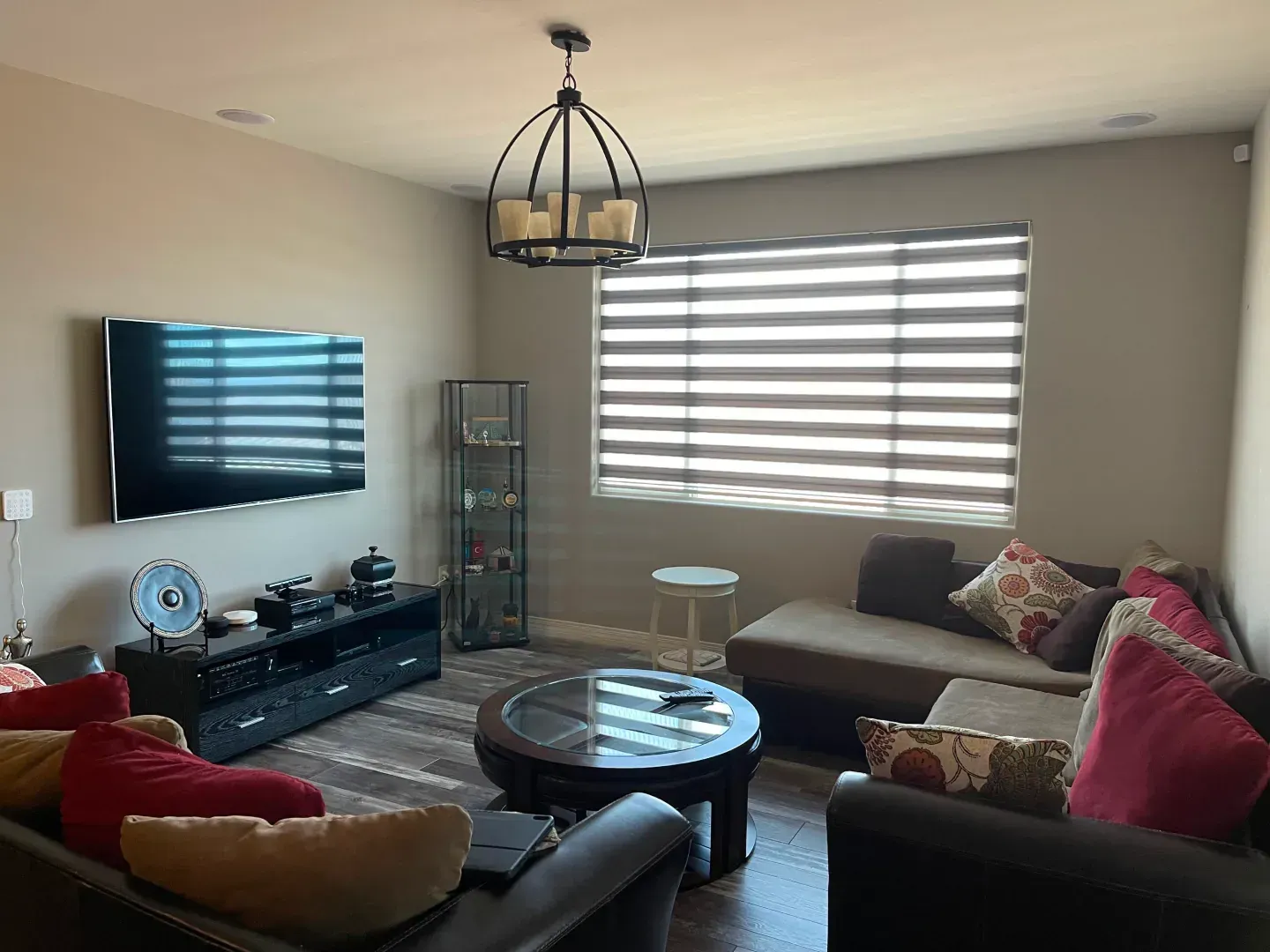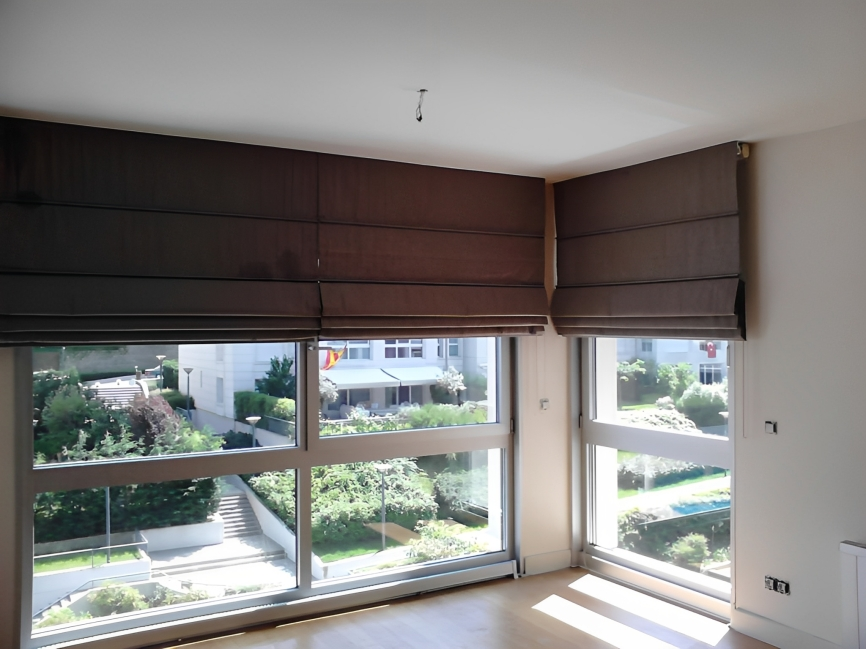Article
How To Measure Your Windows for New Blinds and Shades
September 6, 2024
Measure Once Cut 10 times....or is it the other way around?

How to Measure Your Windows for the Perfect Blinds and Shades Fit: A Complete Guide from StyloHome
Choosing the perfect blinds and shades for your home is an exciting process that can transform the look and feel of any room. However, getting the right fit is crucial. Poorly measured or incorrectly fitted window treatments can lead to gaps, awkward installations, and ineffective light control. At StyloHome, we understand the importance of accurate measurements to ensure your blinds and shades fit perfectly. In this comprehensive guide, we’ll walk you through the step-by-step process of how to measure your windows for a flawless installation, helping you avoid common pitfalls and ensuring a seamless look.
Why Accurate Measurements Matter
Before diving into the measuring process, it’s important to understand why getting the measurements right is so critical:
Functionality: Ill-fitting blinds or shades can reduce their ability to effectively control light, block heat, or provide privacy.
Aesthetics: The right fit enhances the appearance of your window treatments, ensuring they look sleek and well-integrated into your space.
Energy Efficiency: Properly fitted blinds can help improve energy efficiency by minimizing drafts or unwanted heat gain, which is especially important in Tucson's hot climate.
Cost: Measuring errors can lead to costly replacements or adjustments, so getting it right the first time will save both time and money.
Now that you know why it’s important to get the right measurements, let’s break down the process step by step.
Tools You’ll Need
Before you begin, gather the following tools to ensure an accurate and smooth measuring process:
Steel Measuring Tape: A flexible steel tape will give you the most accurate readings, as cloth or plastic tapes can stretch.
Step Stool or Ladder: Depending on the height of your windows, you may need a stool or ladder to reach the top of the window frame.
Pen and Paper: Keep a notepad or a printed measurement sheet handy to record your dimensions as you go.
Level: For windows that appear slightly off-kilter, a level can help you determine any unevenness in the window frame.
Measuring App (Optional): Some smartphones have apps designed to assist with window measurements, but always double-check with a physical measuring tape for accuracy.
Understanding Inside Mount vs. Outside Mount
Before you start measuring, it’s important to decide whether you want your blinds or shades to be installed inside the window frame (inside mount) or outside the window frame (outside mount). The type of mount you choose will affect how you measure your windows and the overall look of your window treatments.
Inside Mount
Inside mount blinds and shades are installed within the window frame, providing a clean, streamlined appearance. This option is ideal if you want to showcase the window molding or if you have a decorative trim around your window.
Pros of Inside Mount:
Offers a sleek, minimalist look.
Maintains the architectural beauty of the window.
Allows you to layer window treatments, such as combining shades with curtains.
Cons of Inside Mount:
Requires precise measurements to ensure a snug fit.
May not be suitable for shallow window frames.
Outside Mount
Outside mount blinds and shades are installed outside the window frame, typically on the wall above the window or on the window molding. This option is ideal for covering imperfections in the window frame, maximizing light blockage, or creating the illusion of larger windows.
Pros of Outside Mount:
Can make small windows appear larger.
Offers more flexibility in measurements.
Provides maximum light blockage and privacy.
Cons of Outside Mount:
Covers decorative window trim or molding.
May require additional space on the wall above the window for installation.
How to Measure for Inside Mount Blinds and Shades
If you’ve decided on an inside mount for your blinds or shades, follow these steps for accurate measurements.
1. Measure the Width
The first step is to measure the width of your window frame at three different points: the top, middle, and bottom. This ensures you capture any variation in width that might occur due to settling or imperfections in the window.
Top: Measure the width of the window at the top inside edge of the frame.
Middle: Measure the width at the middle of the window frame.
Bottom: Measure the width at the bottom inside edge of the frame.
Record the narrowest of these three measurements. This will ensure that your blinds or shades fit properly within the window frame without being too tight.
2. Measure the Height
Next, measure the height of your window from the top of the frame to the windowsill. Again, measure in three places: the left side, the center, and the right side of the window.
Left: Measure the height from the top of the frame to the bottom at the left edge.
Center: Measure the height in the middle of the window frame.
Right: Measure the height from the top of the frame to the bottom at the right edge.
Record the longest measurement, as this will allow your blinds or shades to fully cover the window.
3. Measure the Depth
Finally, measure the depth of your window frame to ensure that it can accommodate an inside mount. Most blinds and shades have minimum depth requirements, so it’s important to check this measurement before making your purchase.
Measure from the front of the window frame to the glass and ensure the depth meets the specifications for the type of blinds or shades you plan to install.
How to Measure for Outside Mount Blinds and Shades
For an outside mount, the measuring process is slightly different, as you’ll be measuring the window plus the space around it for a proper fit.
Measure the Width
Measure the width of the window frame, including any trim or molding. You’ll want to add extra width to ensure that the blinds or shades fully cover the window and provide adequate privacy and light control.
Tip: Add 2 to 3 inches on each side of the window frame (4 to 6 inches total) to ensure full coverage and optimal light blockage.
Measure the Height
Measure the height of the window from the top of the frame or molding to the bottom, including the windowsill. As with the width, you’ll want to add extra height to ensure full coverage.
Tip: Add 2 to 4 inches to the top of the window to allow for the mounting hardware and ensure that the blinds or shades fully cover the window.
Consider the Mounting Surface
Before finalizing your measurements, ensure that you have a solid and level surface above your window for the mounting hardware. If you’re mounting the blinds on the wall above the window, use a level to ensure the surface is even.
Special Considerations for Measuring
Not all windows are created equal, and some may require special consideration when measuring for blinds or shades. Below are some unique window types and tips for measuring each:
Measuring for Bay Windows
Bay windows are beautiful and can add charm to any room, but measuring for blinds or shades can be tricky due to their angled shape.
Measure each individual section of the bay window separately, following the steps for inside or outside mount, depending on your preference.
Pay attention to the angles of the window and how the blinds or shades will meet in the corners.
For a seamless look, consider using custom blinds that are designed specifically for bay windows.
Measuring for Arched Windows
Arched windows add elegance to a home, but they require special attention when measuring.
For inside mounts, measure the width of the window at the base of the arch (the straight part of the window).
Measure the height of the arch from the base to the highest point.
Custom blinds and shades are often required for arched windows, so check with StyloHome for options.
Measuring for Sliding Glass Doors
Sliding glass doors are a popular feature in Tucson homes, especially for patio or backyard access. Vertical blinds or panel track blinds are the best choices for these windows.
Measure the width of the entire door from one edge of the frame to the other.
Measure the height of the door from the top of the frame to the floor.
Consider adding a few inches to both the width and height to ensure full coverage and smooth operation of the blinds.
Common Measuring Mistakes to Avoid
Even small measuring errors can result in blinds that don’t fit properly. To help you avoid costly mistakes, here are some common errors to watch out for:
1. Using the Wrong Type of Measuring Tape
Always use a steel measuring tape for accuracy. Cloth or plastic measuring tapes can stretch, leading to inaccurate measurements.
2. Rounding Measurements
Don’t round your measurements to the nearest inch. Always measure to the nearest 1/8 of an inch to ensure a precise fit.
3. Forgetting to Measure at Multiple Points
Windows are rarely perfectly square, so it’s important to measure the width and height at multiple points to account for any variation.
4. Not Accounting for Hardware
For outside mounts, make sure to account for the additional space needed for mounting hardware. This will ensure your blinds or shades cover the entire window area.
Final Tips for a Perfect Fit
Double-Check Your Measurements: Always measure twice to ensure accuracy. It’s better to spend a few extra minutes measuring than to have blinds that don’t fit.
Consult a Professional: If you’re unsure about your measurements, don’t hesitate to contact StyloHome
for professional advice or a consultation. We’re here to help you get the perfect fit every time.
Consider Custom Options: If your windows have unique shapes or dimensions, custom blinds or shades may be the best option. StyloHome offers a wide range of customizable window treatments







